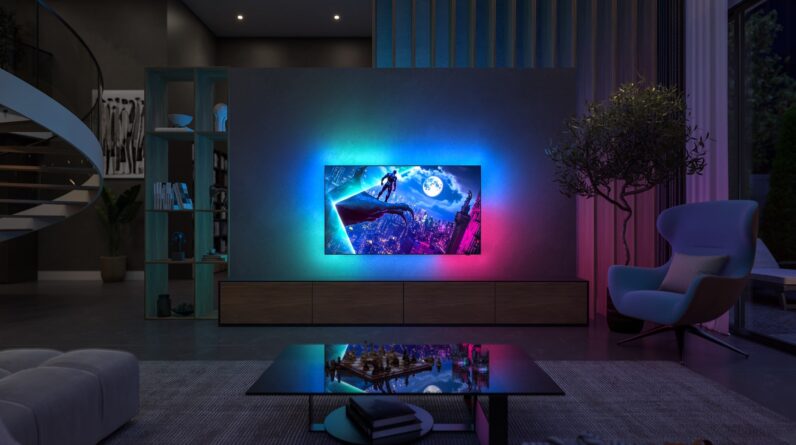
After all blitz of announcements at CES, the launches of new TVs are beginning in earnest, and the latest brand to show off its wares was Philips.
At the TP Vision Live event held annually in Barcelona, Philips revealed a number of new models, including OLEDs, Mini LED TVs and LED sets. For now, we’re going to focus on the new OLED and OLED+ range.
For 2025, Philips will launch the OLED760, OLED810, OLED+910, and OLED+950 (there may also be an alternative to the OLED810 called either OLED820 or OLED850, we’re still waiting confirmation on that).


The mid-range OLED810 follows on from the award-winning OLED809, which turned out to be one of Philips biggest selling TVs of 2024. It comes in sizes from 42- to 77-inches and will feature LG Display’s brighter OLED EX panels, taking peak brightness to around 1500 nits for the larger sizes. The performance is driven by the 9th Gen P5 AI chip that features Adaptive Intelligence that can learn from additional data such as the environment around the TV to optimise the final picture performance.
There’s a 70W 2.1 system for the screen sizes 48-inch and above, the the smallest display getting a 50W sound system. Each one features a rear-facing bass driver for the low frequencies. Design-wise the OLED810 has a central, swivel stand while the 77-inch model gets feet.
The OLED+910 and OLED+950 are the stars of the new range, with both featuring the new RGB Tandem OLED panel from LG Display that features in the LG G5, M5, as well as Panasonic’s Z95B OLED for a very bright HDR performance (up to 3700 nits in some cases). This new panel features improved reflection technology that alledgely can blow more than 99% of any on-screen reflections to ensure picture performance isn’t spoiled by annoying ambient light.


The main difference between the OLED+910 and OLED+950 is the former features an integrated Bowers & Wilkins 3.1 sound system. While the driver configuration is the same as it was in the OLED+909, Bowers & Wilkins’ engineers have further optimised the available speakers so they can be driven harder for a larger, room-filling sound but with lower levels of distortion. We’ve heard the sound system, and for a TV it’s one of the better ones we’ve heard in recent times.
You can also connect an external subwoofer if you want extra bass with this TV.
The OLED+950 features an integrated 70W 2.1 sound system, which might surprise some expecting a Bowers & Wilkins sound system to be added to this more expensive model. At least with this model you can choose to add a sound system of your own choosing. This model comes in 65- and 77-inch sizes, while the OLED+910 will be available in 55- to 77-inch sizes.


Last but not least is the OLED760, Philips more affordable OLED TV in its line-up. It features an AI chip like the others but not as advanced (7th Gen P5 AI) but it is the recipient of an “improved OLED EX panel”, although peak brightness for this model is only up to 1000 nits. Still, that’s much brighter than the OLED700 series was just a few years ago.
Sizes come in 48- to 77-inch and this model will have the Titan OS interface that launched in 2024. Interestingly for gamers, all for HDMI inputs offer high bandwidth option with 48-120Hz refresh rates.
No prices were announced for any of the OLEDs, but you can expect the OLED760 to arrive in May of this year, followed by the OLED810 in June. The OLED+910 and OLED+950 are expected in the second half of 2025.
With its four-strong OLED line-up, Philips will be looking to take the fight to LG in the UK and Europe, but can it knock the leader in the OLED market off its perch (or even wobble it)? We’ll have to wait and see.






